From the legend of the aromatic grass…
For a long time, I thought thach xuong bo was just in the legend. It turns out that growing thach xuong bo has been so far a popular pleasure pursuit for many people. More interestingly, thach xuong bo in Hue is a rare species which collectors hunt.
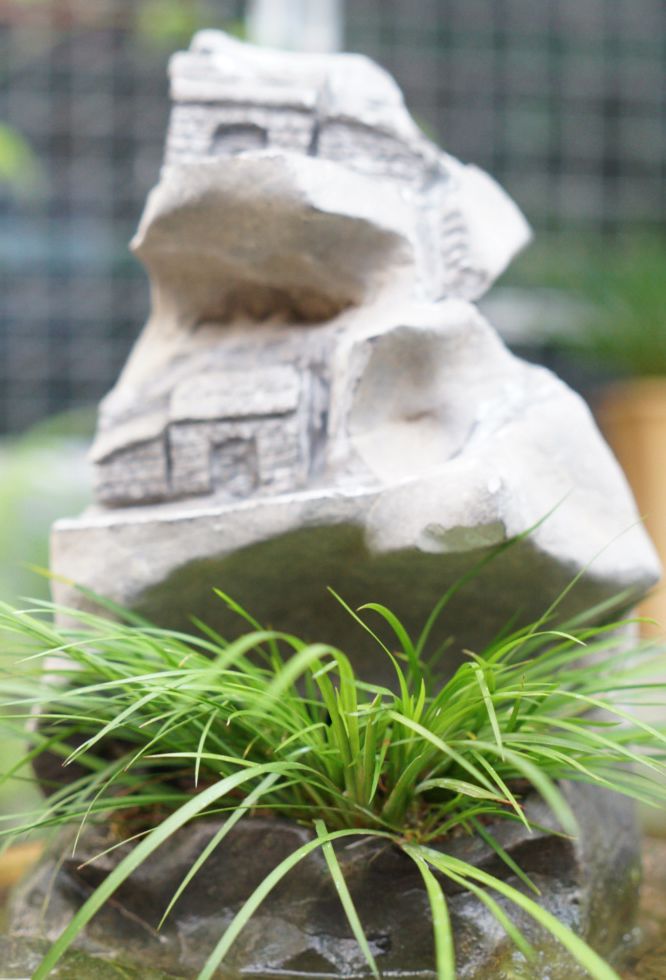
An artwork of thach xuong bo and rock
“The Perfume river originates from the two sources at the upper part of the Thua Thien province. It weaves through fields and gardens passing the Citadel of Hue to Thuan An then to the East Sea,” explains Mr. Van Binh Ton That Luong, a member of the royal family with profound knowledge of history and the author of the article Huong Giang Hanh.
“On both the riversides are medicinal thach xuong bo which makes the water fragrant.” This explanation is accepted by most people because of its uniqueness and poeticalness.
According to our research, this fragrant grass often grows at streams, creeks and between rocks. Oriental medicine physicians are not unfamiliar with this herb and Vietnamese medical books describe thach xuong bo as medicinal. It helps treat neurasthenia, rheumatism, fever in children, loss of appetite, poor digestion, shortness of breath, tinnitus, etc.
Many oriental drugstores in Hue often had people go finding this rare medicinal herb. Legend had it that thach xuong bo was present in the prescription for the elixir of life for Qin Shi Huang.
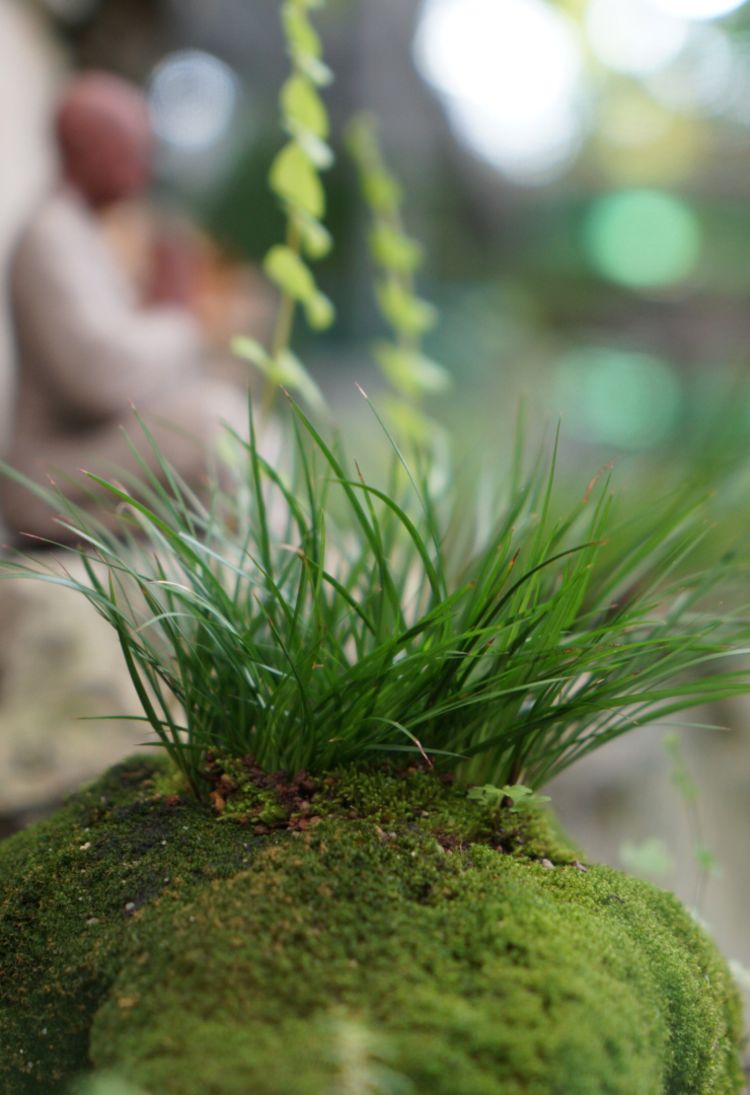
An artwork of thach xuong bo and rock
… to a delicate pleasure pursuit
While searching for documents about the Perfume river, I happened to discover a large club of collectors who grow thach xuong bo in Vietnam. It turns out that this fragrant grass has been so far well liked and hunted. The grass is brought home and combined with rock and wood to become artworks.
According to Lai Phuoc Long, a collector and trader of thach xuong bo in Hue, the hobby of growing thach xuong bo has been popular in China, Japan, Taiwan, etc., which can be seen in ancient paintings. In Vietnam, the hobby has appeared recently but is spreading very quickly.
According to Long, many people in Hue grow thach xuong bo, especially at pagodas and some elderly hermits’ houses. Growing thach xuong bo, drinking tea, and writing calligraphy are many people’s favorite hobbies.
In addition to thach xuong bo Hue, in the world there are various types with pompous names such as kim tien, long nguyet, ho tu, thien tieu suyen, hoang kim co, quan thanh, etc. Those species are mostly imported from China and Japan at prices from hundreds to millions dongs. The most expensive species are quan thanh and hoang kim co because of their scarcity. In Vietnam there are 4-5 different species in Lao Cai, Ha Giang, Hue, etc.
In the Tay Bac (North West) area thach xuong bo is added to the well-known dish of thang co. But the most famous and scarce species is along the Perfume river for its green leaves, nice roots and light fragrance unlike other species which give a very strong smell.
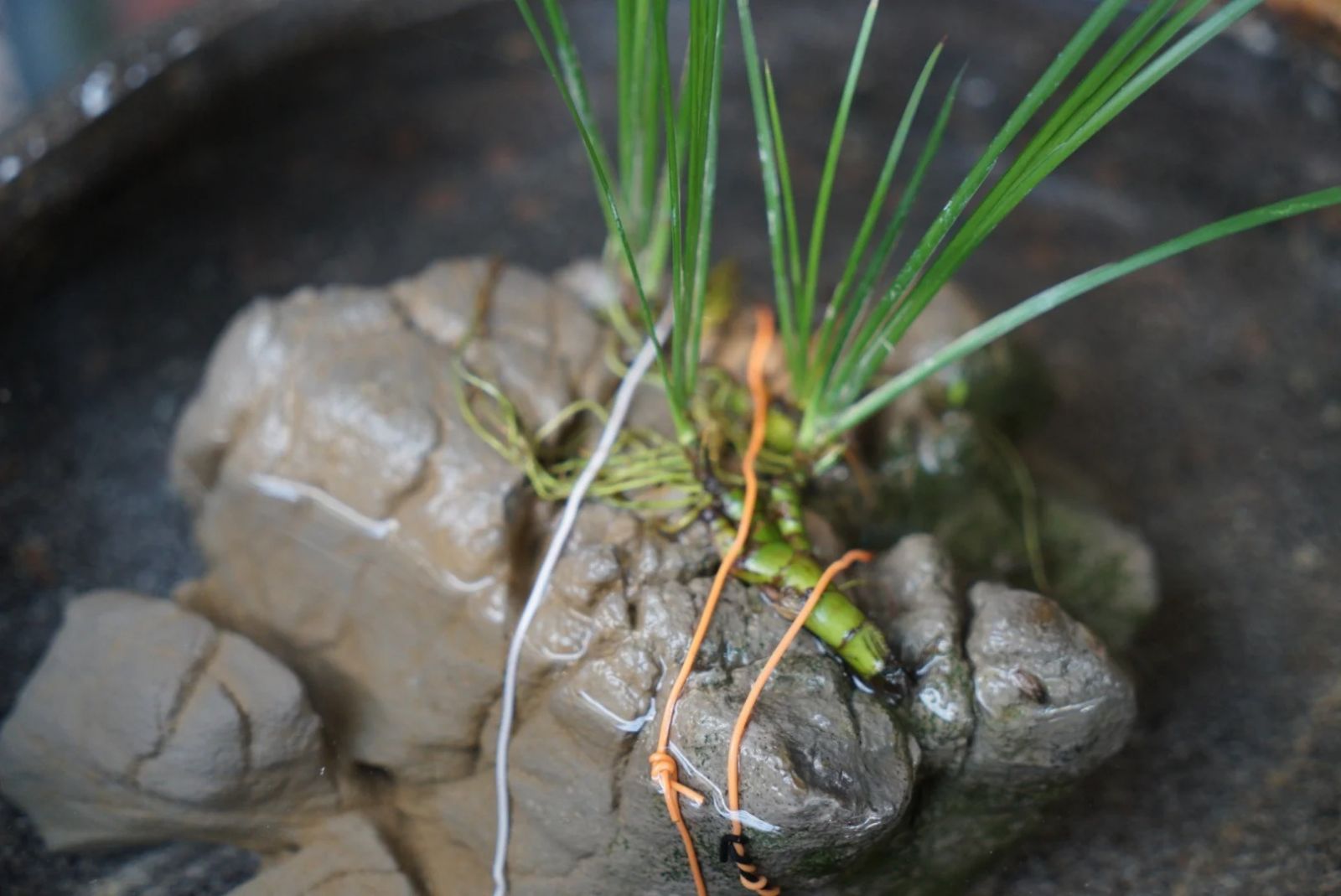
Thach xuong bo is being combined with rock
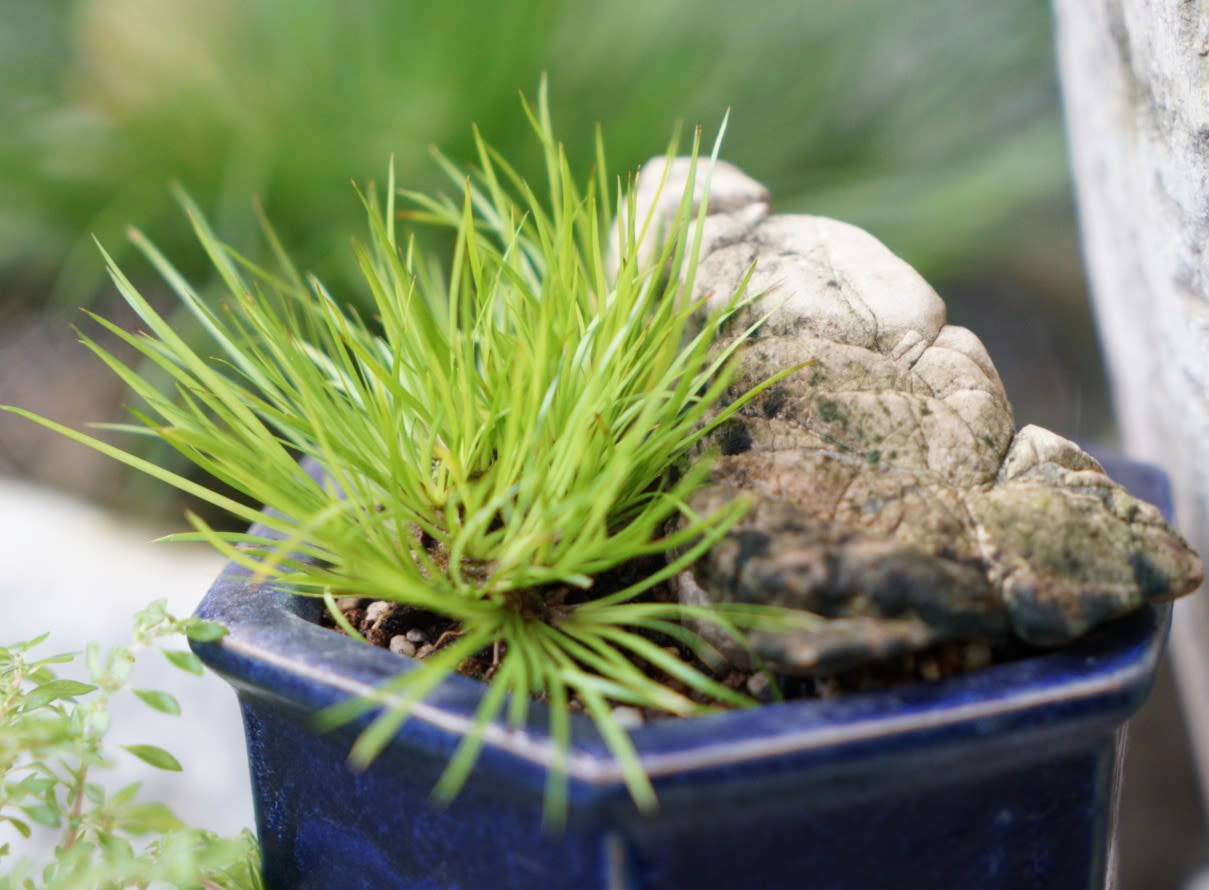
An artwork of thach xuong bo
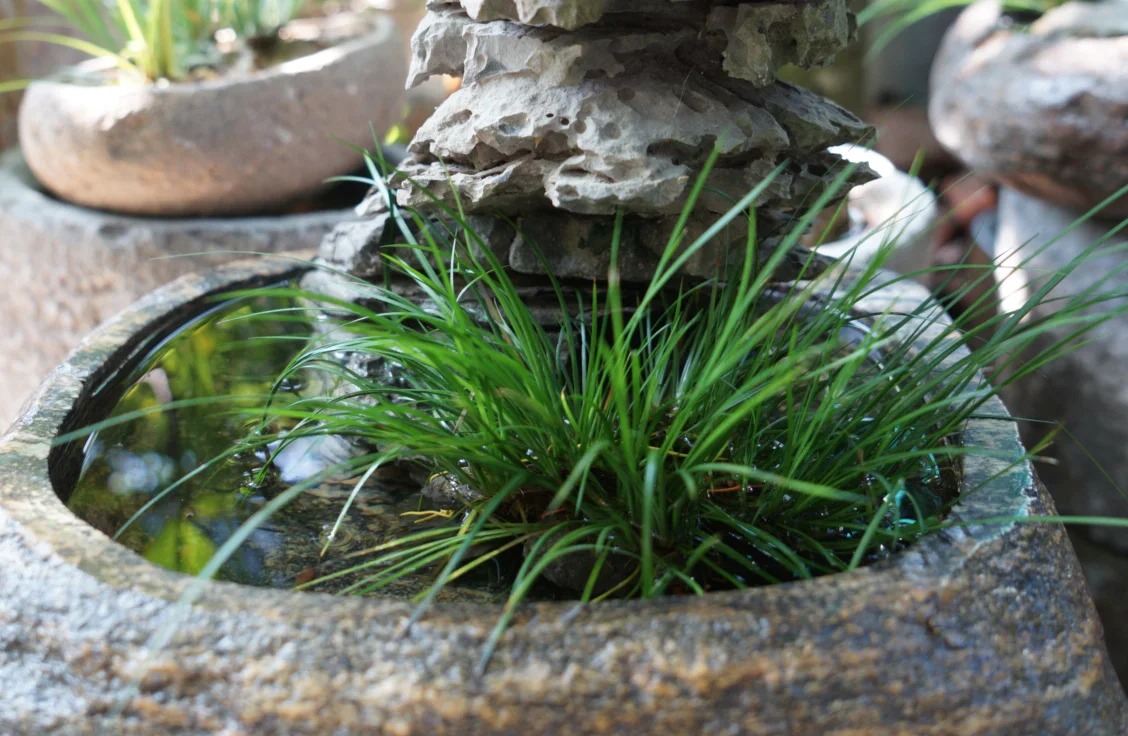
A pot of thach xuong bo with rock and water
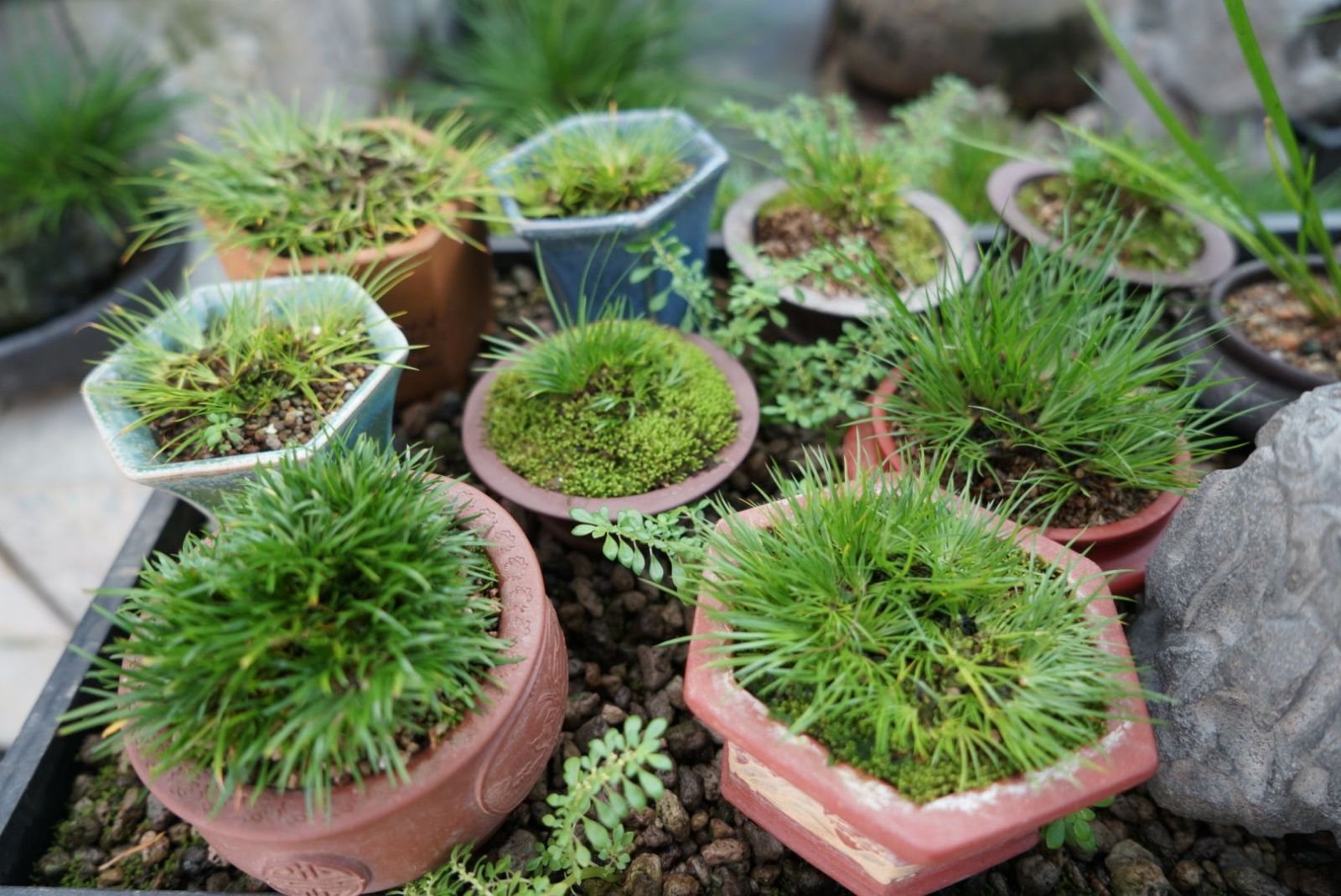
Different species of thach xuong bo
The pursuit that requires lots of care
Lai Phuoc Long took me to a beautiful garden saying that growers of thach xuong bo should be regarded as artisans just like orchid artisans because they deserve the title. An artwork of thach xuong bo must be the harmony of the pot, the grass, the moss, the rock and the water. They must be well combined in a way that helps the grass grow and reveals the grower’s style as well.
Thach xuong bo is attached to rock or wood for their roots to develop. In that process, stimulate their roots, maintain their leaves, and keep temperate temperature and sufficient humidity so that moss can grow. Those rules are applicable to all kinds of fragrant grass.
As for thach xuong bo Hue, a bunch of thach xuong bo in nature is about 20-25 centimeters high. After 2-3 years in the garden, it become smaller with 10-centimeter-long leaves or even only 5 centimeters, suitable for display on the table.
The pot for thach xuong bo is made by hollowing the rock as a whole. Besides watering it and keeping it humid, growers must trim the grass every day, fertilize it, treat its diseases and protect it from bugs and fungi. All that requires meticulousness.
People often collect various types of thach xuong bo of different shapes. On hot summer days, they sit in the shade by their artworks of fragrant thach xuong bo sipping tea, painting, or reciting poetry. They feel peaceful doing so in their gardens pervaded with the aroma from thach xuong bo.
For those who love thach xuong bo all over Vietnam, thach xuong bo growing along the Perfume river is their desire. Their collections of fragrant grass are considered insufficient without the grass of the Perfume river. But it is not easy at all to find it.
According to experienced collectors in Hue, thach xuong bo has become scarce in nature because of negative effects of deforestation and the change of the flow in rivers. Luckily, some collectors are growing the grass and trying to spread it as a way to preserve it. The legend of the fragrant river is therefore still there for people to tell.
Story: GIA MAN
Photos: DAC HAT
